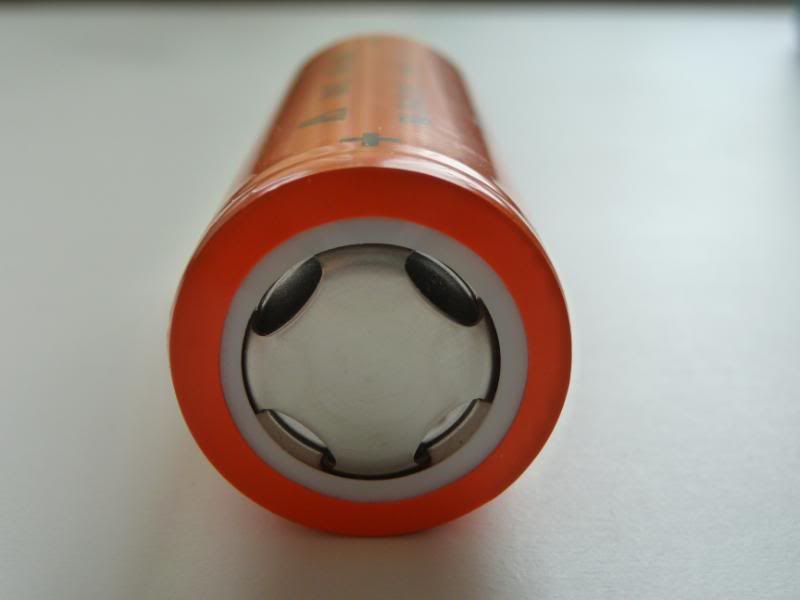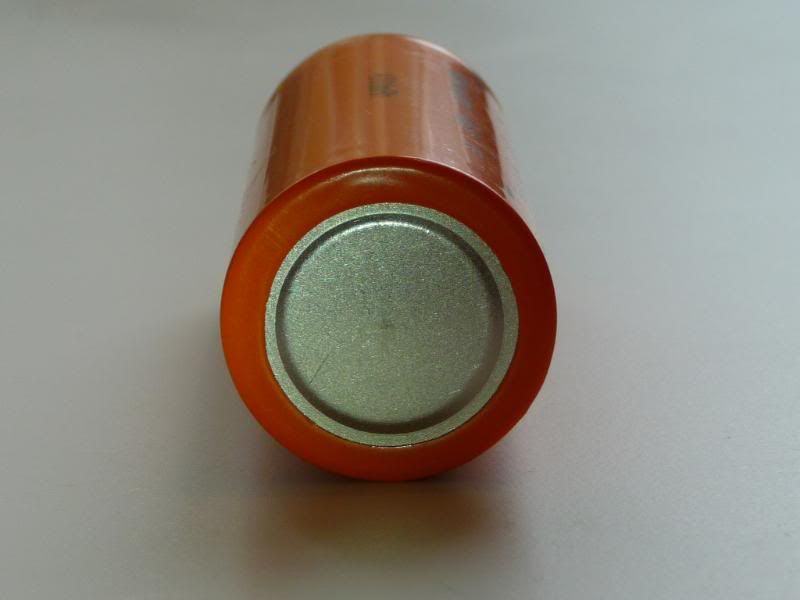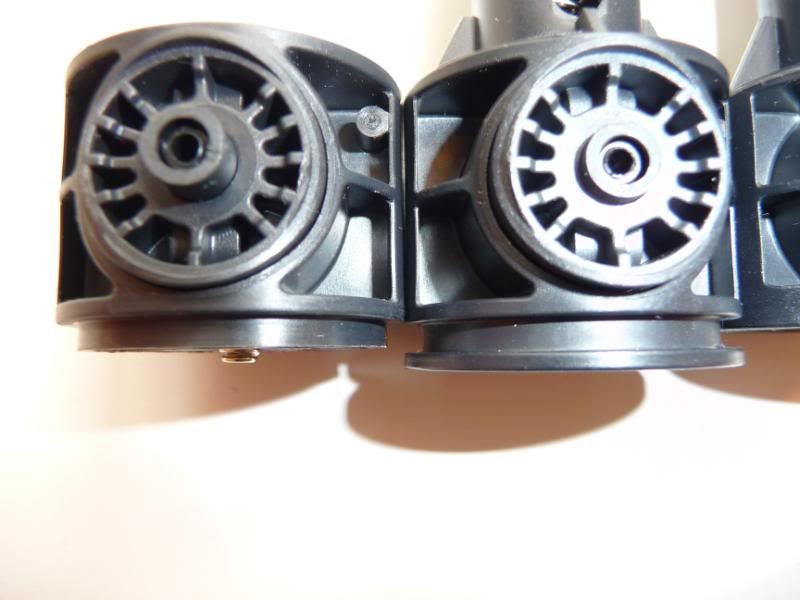
Here is another quick battery test, where I only have the one cell, so no comparisons or comments on battery matching. However, as I said in my previous review of the Ridbatt/Torchy 2600mAh cell, even when testing cells in pairs, your not getting a truly representative overview of that cell. Getting two cells that match well is great, and hopefully an indicator that any randomly chosen pair (or more) of those cells will match well, but certainly no guarantee.
With that in mind, let's look at the results that the MNKE 4000mAh cell gives, and take them at face value.
This cell was received by myself packaged with a Shadow "Stone White" JM07 Pro, purchased from www.intl-outdoor.com. The MNKE cell is now out of stock, and while these lights are still available, they are now packaged with the "King Kong" 26650 cell rather than the MNKE IMR cell.
Testing Equipment
A quick re-cap of the equipment used for testing: -
I will be charging cells with an iCharger 106B+, and discharging and testing internal resistance with an iCharger 208B. Two chargers are used for speed and convenience – one cell can be charging while a second is being discharged (not relevant in this instance). I use the same charger for each step to ensure consistency in conditions between tests, so that results are comparable.
Voltage is measured with a Precision Gold WG 020 multi-meter, dimensions with a Precision Gold digital calliper, and weight with a Neva digital scale stated to be accurate to 1/100th of a gram.
In this particular test, I actually had to use a Neva 100gram digital scale, only accurate to 0.1grams, as the cell was heavier than my normal scale's 50gram maximum weight limit.
The base of the cell is attached to the charger via a 12” 16AWG cable with a large, strong magnet soldered to it. The positive button is attached via a magnet (if it adheres well) or via a crocodile clip. In this instance, the positive magnet did not adhere well, and the crocodile clip was attached via one of the large vent holes.
Results at a glance
MNKE 4000mAh IMR
This cell was packaged with the “Stone White” Shadow JM07 Pro that I purchased from www.intl-outdoor.com. As such, I only have one of these cells to test.
These cells were sold at a cost of $9.95 each, when in stock.
|
|
Cell 1 |
|
Initial voltage |
3.90V |
|
Measured length |
66.45mm |
|
Measured width (max) |
26.40mm |
|
Weight |
92.4 grams |
|
Internal resistance at initial voltage |
46mOhm |
|
Capacity from storage down to 3.00V @ 1A |
2299mAh (2) |
|
Internal resistance after storage charge |
47mOhm |
|
Capacity from 4.2V down to 3V @ 1.0A |
3710mAh (1) |
|
Capacity from 4.2V down to 3V @ 3.0A |
3685mAh |
|
Capacity from 4.2V down to 3V @ 5.0A |
3615mAh |
|
Capacity from 4.2V down to 3V @ 7.0A |
3491mAh |
(1) Normally, I carry out a 0.2C discharge to try and replicate the manufacturer’s claimed capacity, but what with 0.8A being so close to 1A – and it is an IMR cell after all, and a well regarded one at that, so voltage sag should be minimal at low discharge rates – I decided to skip straight to 1A.



Construction
This cell has the less brittle, vinyl type wrap.
The cell has a wide, flat button. It is raised slightly above the shoulder of the cell, which should assist in making contact within lights and chargers.
Being an IMR cell, it has no protection circuit fitted, which in turn makes it shorter and narrower, which should also assist in it's compatibility with lights and chargers.
The positive contact is aluminium, and the magnet on my charging cable would not adhere to it at all, instead being strongly attracted to the shoulder of the cell.
Light compatibility
Obviously, my normal selection of lights is no good to me here at all, so I shall forego the normal compatibility table here.
The only dedicated 26650 light that I have is the Shadow JM07 Pro that the cell came with. Obviously no issues here. The light has a spring at the head and a sprung plunger at the tail, so no issues with the flat head. Protected cells are a snug fit in this light, but no problem with the slightly narrower IMR cell sliding in and out.
My other lights that I use with 26650 cells are modified, sleeved, D cell Maglites. Older MagDs have a short spring at the head, but this is surrounded by a plastic collar. Newer MagDs have a flat metal plate for the positive contact, again surrounded by a plastic collar. In both cases, the plastic surrounding the collar needs to be removed in order for contact to be made with the MNKE cell.

New style on right, old style in the middle, old style switch with tower and rear collar removed on left.


By trimming the rear of the switch assembly, you can expose the spring on the old style MagD switches, to allow contact with a wide buttoned or flat topped cell.
Charger Compatibility
|
Charger |
Fits |
Functions |
|
4Sevens single bay |
Yes |
Yes |
|
Trustfire TR-001 |
Yes (2) |
No (3) |
|
Ultrafire WF-139 |
Yes (2) |
Yes |
|
Ultrafire WF-188 |
Yes – two |
Yes |
|
HXY-042V2000A |
Yes – loose (2) |
Yes |
|
XTAR WP2 II |
Yes – just (4) |
Yes |
|
Pila IBC |
Yes (2) |
Yes |
|
Jetbeam/Sysmax Intellicharge i4 |
Yes – two (5) |
Yes |
(2) Most of the consumer grade, two bay chargers fit the MNKE IMR cell pretty well, although you will only be able to charge once cell at a time - these chargers are generally designed for use with two 18mm (maximum) at a time, and the additional width of a 25/26mm cell prevents another cell of the same width sitting in the second channel. I have found in the past that the wider, protected ICR cells of the same size sit awkwardly at an angle, pushed to one side by the wings that are often found at either side on the charger bays.
Due to the large vent holes in the positive contact, you may need to rotate the to make contact with the charger's positive contacts.
No such issue with the Ultrafire WF-188, which has a wide, flat base with no side wings, and is designed specifically to take two wide (up to 32mm width) cells at the same time.
You could actually charge two cells of any width at the same time with any of these chargers, but the cells would have to sit off the charger, and be connected via magnet tipped cables.
(3) The cell sat very securely in the Trustfire TR-001, but could not make contact, so charging did not commence. I'm sure that this could easily be resolved, with some foil or thin magnets.
(4) The cell would fit and charge in the Xtar WP2 II, but the cell was in contact with the sliding negative terminal of the adjacent charging bay. If this charger were to be used to charge this cell regularly, I would suggest grinding off the corner of the adjacent negative terminal to prevent damaging the cell's wrap.
(5) Like the two bay chargers, I have found that protected 26650 cells do not sit comfortably in the i4. Again, the wings at the sides of the charger push the cell inwards. You might get away with charging in positions 1 and 4, but the cells aren't secure. That then leaves you with using bays 2 or 3, and only being able to charge one cell at a time. With the narrower IMR cell tested here, the cells sit more securely, and you can charge two cells in bays 1 and 4, or 1 and 3 (or alternatively, 2 and 4) without any concerns about the cells getting knocked and coming out of the charger. Using bays 1 and 4 would double the charge rate in comparison to using alternating bays.
Internal resistance
|
Cell |
Voltage |
Internal resistance |
|
MNKE 4000mAh IMR |
3.90V (as received) |
46mOhm |
|
MNKE 4000mAh IMR |
3.74V (storage) |
47mOhm |
|
4Sevens 3900mAh S12 #1 |
3.81V (as received) |
107mOhm |
|
4Sevens 3900mAh S12 #2 |
3.81V (as received) |
104mOhm |
|
4Sevens 3900mAh S12 #3 |
3.75V (storage) |
103mOhm |
|
4Sevens 3900mAh S12 #4 |
3.75V (storage) |
100mOhm |
|
AW 26500 IMR #1 |
3.76V (storage) |
39mOhm |
|
AW 26500 IMR #2 |
3.77V (storage) |
43mOhm |
|
Ultrafire 25500 #1 |
3.75V (storage) |
117mOhm |
|
Ultrafire 25500 #2 |
3.76V (storage) |
107mOhm |
Conclusion
As is common for IMR cells, internal resistance is low, and voltage sag should be reduced as a result. Having no protection circuit also helps to keep IR lower.
The capacity isn't as high as stated, but not too far off. I started my discharges at 1.0A, rather than at 0.2C, which would be 0.8A. I doubt in this case that the slightly higher discharge rate made much difference to the measured capacity. Fact is that, when looking at the current highest capacity cells for any given size and type, the highest capacity ICR (LiCo) cells will have higher capacity than the best rated IMR cells. With most 26650 LiCo cells being rated right around 4000mAh, having IMR cells rated at the same capacity is perhaps a touch hopeful. Having said that, much as 18650 cells have benefitted from the most development, and hence the highest capacity gains in LiCo cells, IMR 26650 cells are more common in power tools, and so may have received more development than LiCo cells of the same size. Maybe with lower resistance cables, I could have gained a little more capacity, or maybe MNKE check their capacity at a specific (lower) discharge rate rather than at 0.2C.
Irrespective of the somewhat reduced capacity, the cell appeared to perform well between 1A and 5A, seeing a gradual drop in capacity as discharge rate increased. Despite a larger drop in capacity at a 7A discharge, it still retained 94% of the capacity that had been measured at 1A.
While the positive contact is slightly raised, it is flat and very wide, so you do need to be careful what lights you use it in. Charger compatibility on the other hand was not an issue, and it fitted in all the consumer chargers I tried it in - much better than I had expected. It also charged in all but one of them.
If you need an IMR 26650 cell, and assuming that these come back in to stock, MNKE is a well respected brand, although there are apparently fakes/B grade stock in circulation, so you need to be careful of your sources. This cell certainly gave me no reasons to question MNKE's reputation.